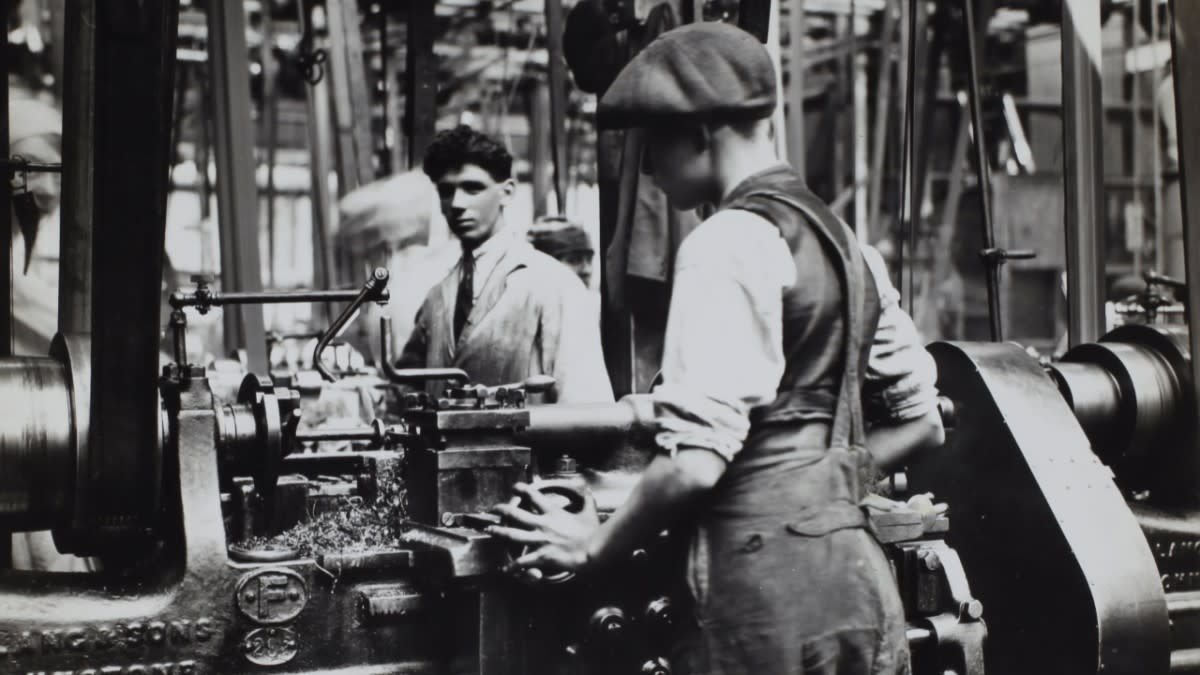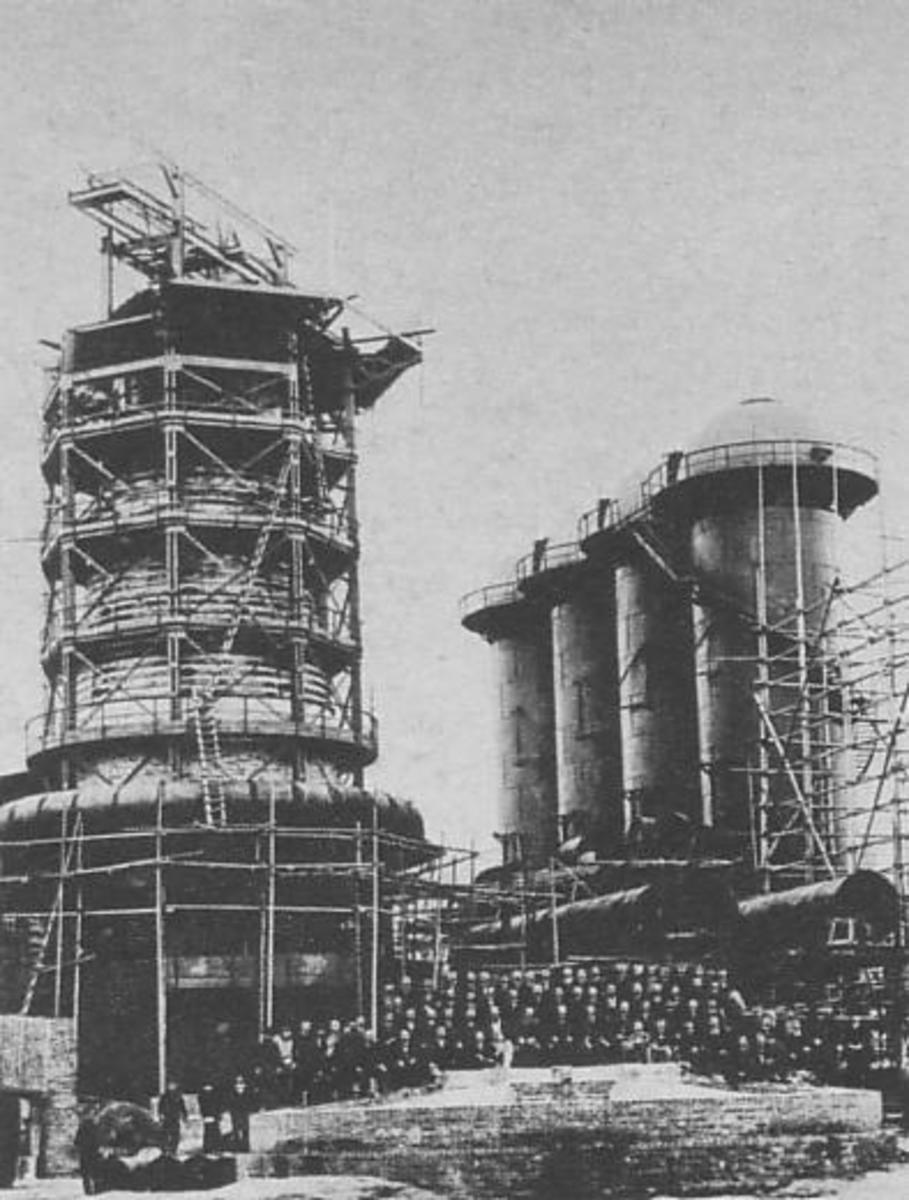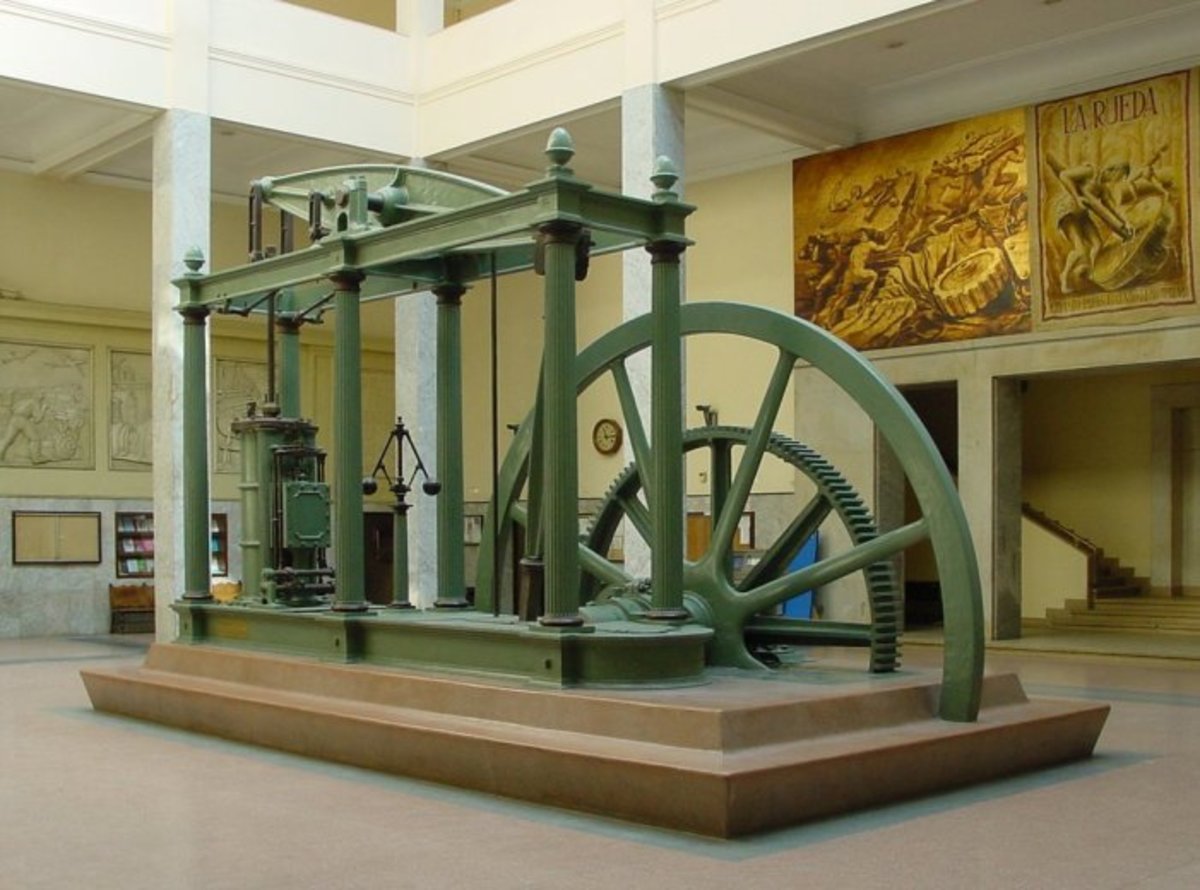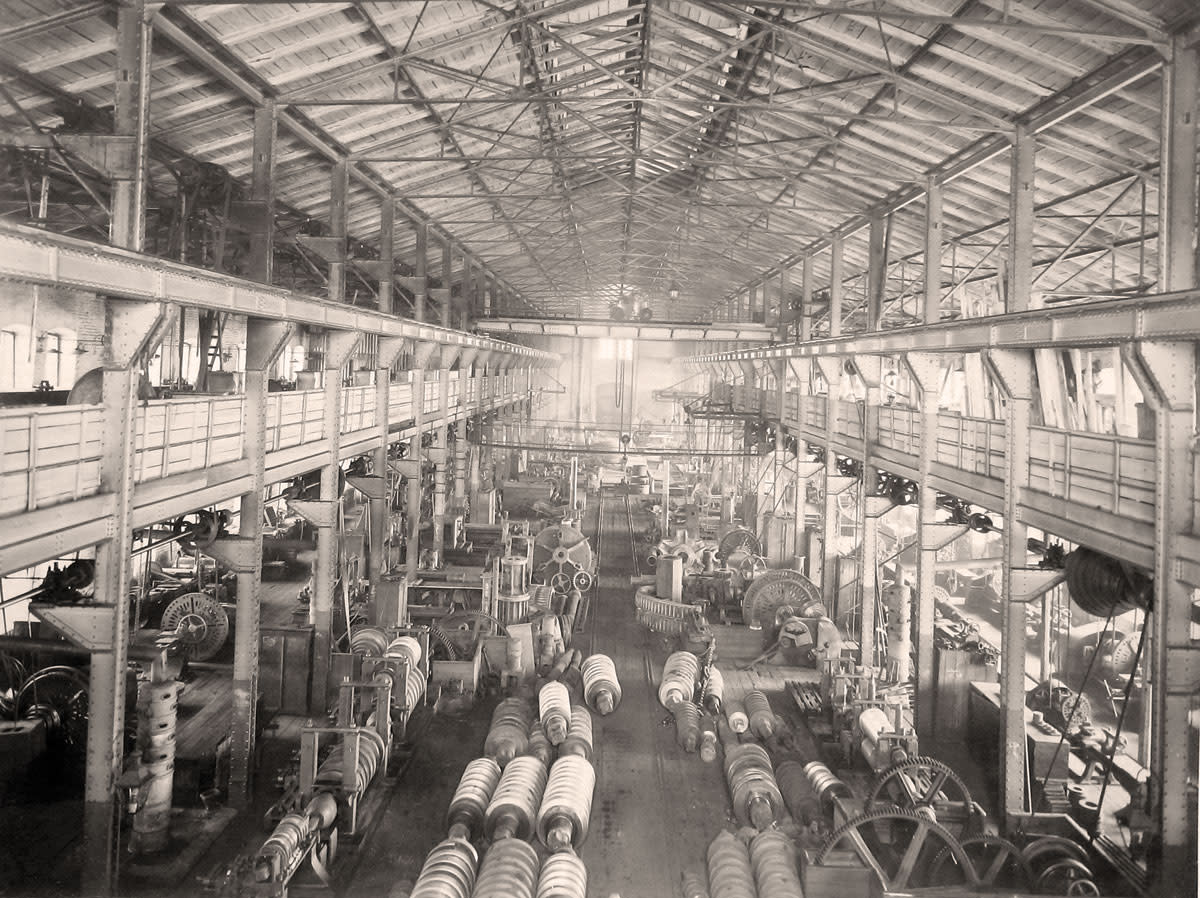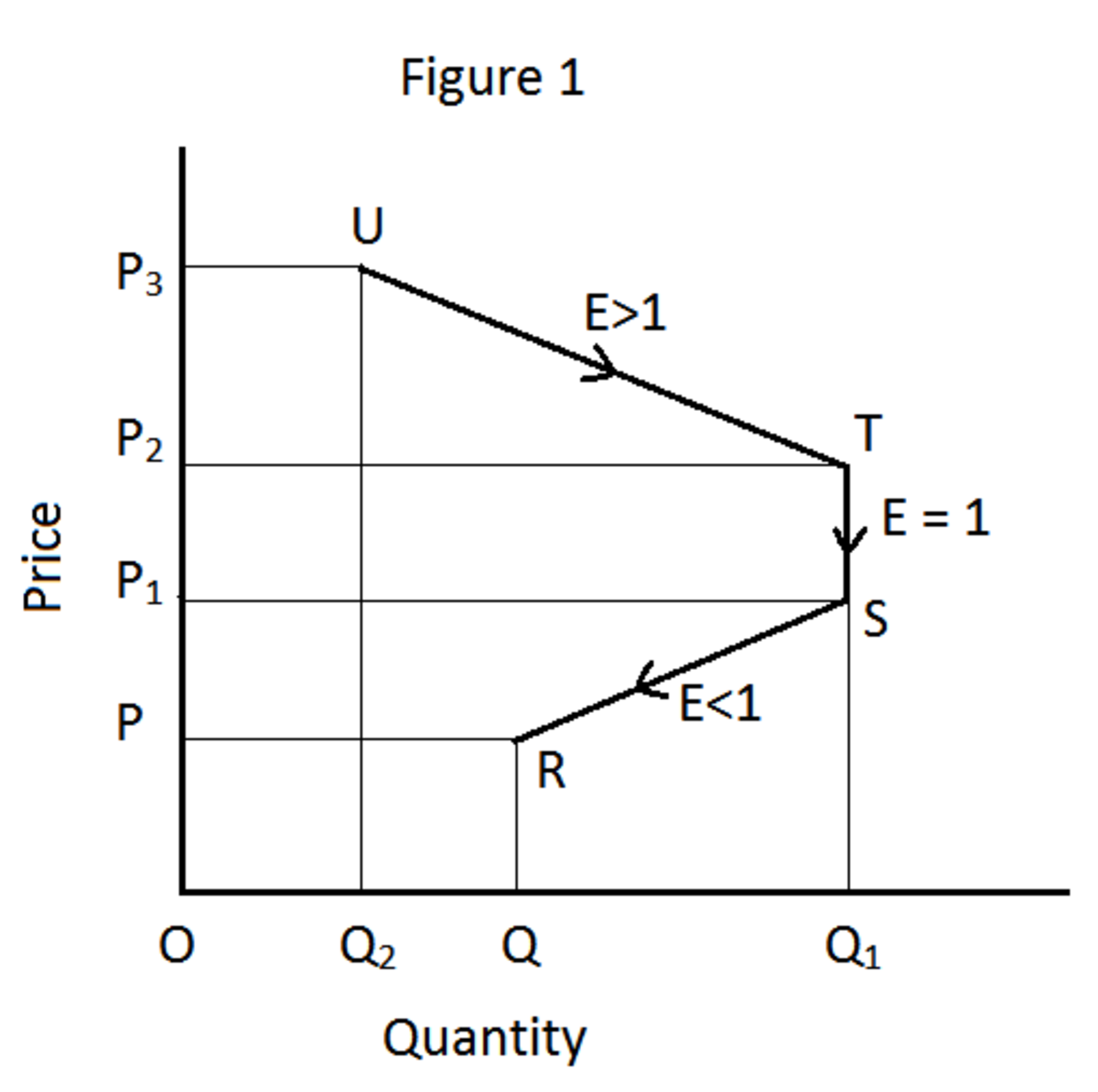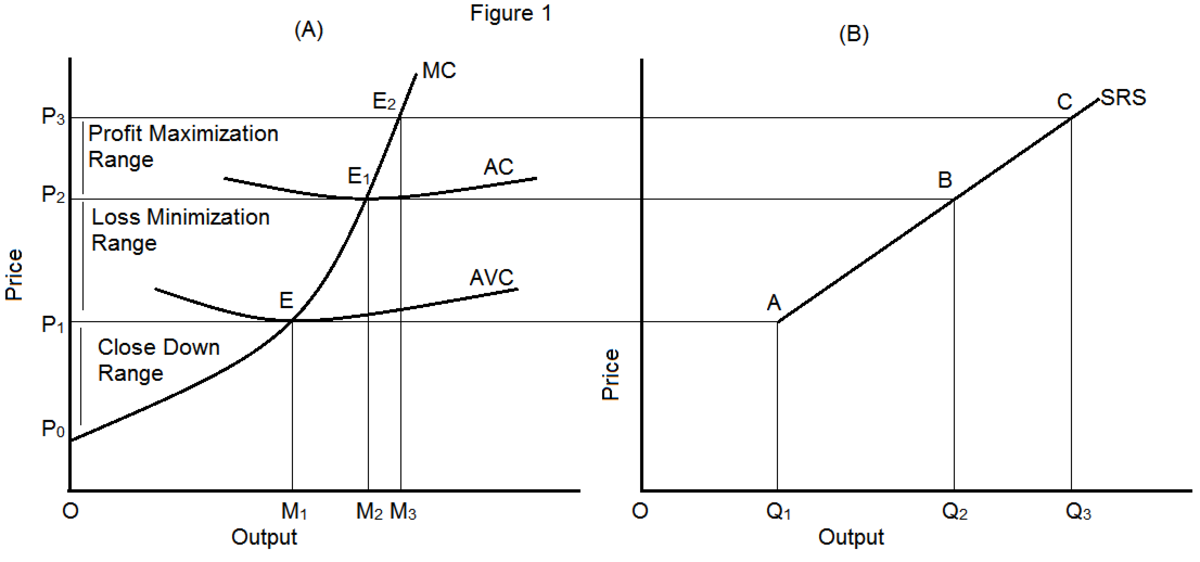An Introduction to the Industrial Revolution
The Industrial Revolution took place first in England during the second half of the 18th century and the first half of the 19th century (1750 – 1850). During the period, British industry underwent many great changes. The word, “revolution” describes a fundamental change. For example, a political revolution is a complete change of government. Similarly, the Industrial Revolution was a change in industrial method and organization. It was a change from hand work to work done by machines driven by power. In industrial organization, it was a change from work at home to work at factory. Under new conditions, production is carried on a large scale by the application of huge and costly machinery and large amounts of capital.
The Industrial Revolution that took place in Great Britain was neither sudden nor violent. It was gradual. Many inventions took place during the period. In the textile industry, there were many inventions like Hargreave’s spinning Jenny, Arkwright’s water-frame and so on. Similar inventions took place in other industries too. In mining and engineering industries, there was the development of the steam-engine, the invention of Davy lamp and so on. At the same time, agricultural and commercial revolutions took place side by side with the industrial revolution. Until the middle of the eighteenth century, England was mainly an agricultural country. And a majority of the people lived in villages. There was a little industrial production, and it had been carried on a small scale in a simple way. For example, textile work was done by hand as cottage industry by people who were engaged in agriculture. The system that prevailed then might be described as “domestic system”. But the system could not meet the demands of an expanding trade and it had many defects. So there was a need to introduce new methods of production. This encouraged inventions in the textile industry. Necessity is the mother of invention.
Machines were first driven by water-power. But after the invention of steam-engine, factories were established where coal was found. Slowly factory towns came into existence. During the course of the Industrial Revolution, there was the change from the domestic system to factory system. New machines were bulky and expensive and sere driven by power. Under the old system, the worker himself had his own capital. His capital consisted of some hand-made implements. But under modern conditions, labor is separated from capital. That is way the present system of economic organization in many countries is called capitalistic system.
Industrial Revolution started earlier in England than in other countries such as France, Germany and Russia. There were many reasons for this. First, English trade expanded to a great extent during the 19th century. But at that time there was shortage of labor. So there was a great need to use machinery to satisfy the increased demand for goods. Second, England enjoyed political and financial stability. It is true that England was engaged in some wars in the 18th century. But they were fought outside the country, say in Asia or America. Political freedom and stability of England helped her industrial progress. Not only that, the Englishman enjoyed personal freedom from the 16th century onwards. But industrial progress in many countries was arrested by the absence of personal freedom. Third, England had plenty of capital. Some of the big trading companies like the East India Company achieved a great success in business and brought wealth to England. And so England had a ready command of capital. Lastly, England had many natural advantages. Her geographical position was suitable for world trade. She had excellent harbors and her rivers were fit for navigation. She had a good supply of raw-materials. Besides, coal and iron were available in close proximity to each other.
Results of Industrial Revolution
After the Industrial Revolution, capital has become very important in industrial organization. It has attained a commanding position in modern industry. During Industrial Revolution, the population of England increased to a great extent. Not only that, before the revolution a majority of population lived in the countryside. But after the Industrial Revolution, the majority of the population has come to live in towns where there were factories. After the Industrial Revolution, goods were produced on a large scale by machines at a cheap cost.
A large demand for goods was created, more people were employed and England’s export trade increased. She developed markets for her goods all over the world. England became the workshop of the world. Factory system and wage “slavery” went together. For a long time workers had to work under bad conditions in factories for low wages. However, later on some laws were passed by the government to improve the position of labor. There were some important political effects too. The misery of the working classes in the 19th century gave rise to the new political philosophy of socialism. Further, before the Industrial Revolution, only those who had land had admission to the House of Commons (the parliament body of England). But after the revolution, merchants and manufacturers fought many political battles and won the right to represent in the parliament. In course of time, even labor was represented in the parliament.
© 2013 Sundaram Ponnusamy

